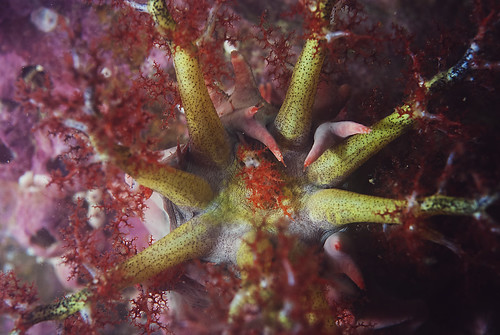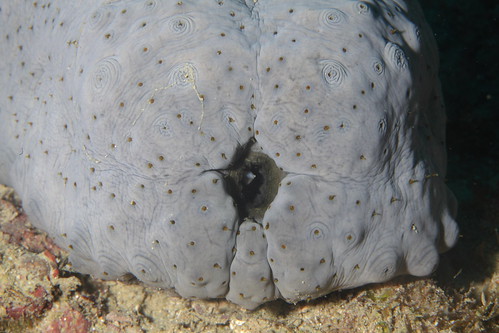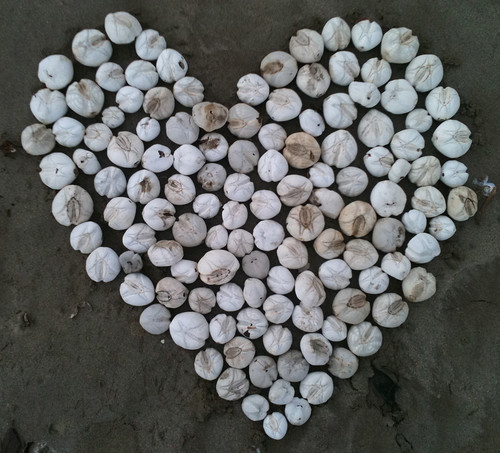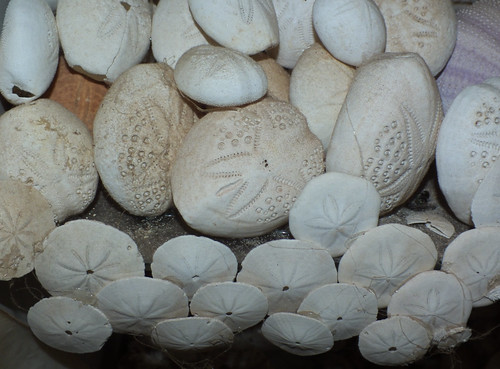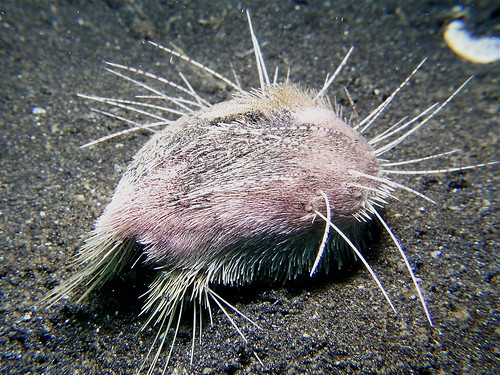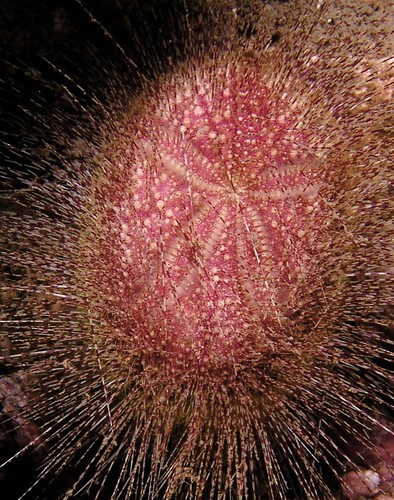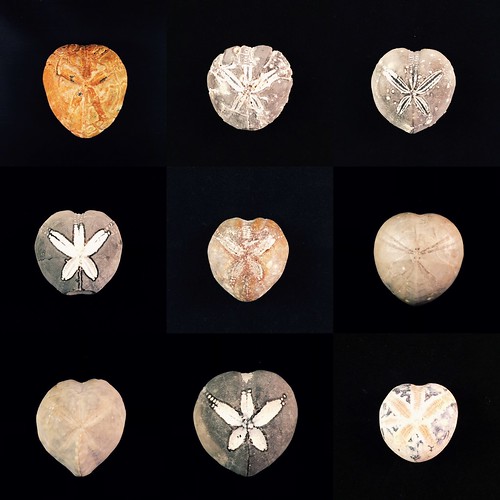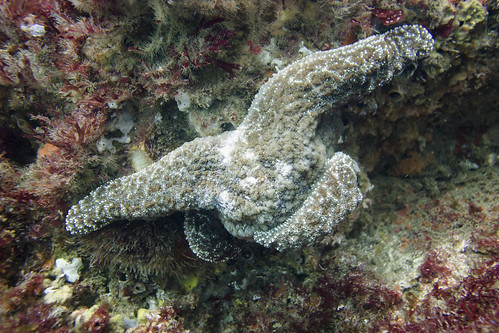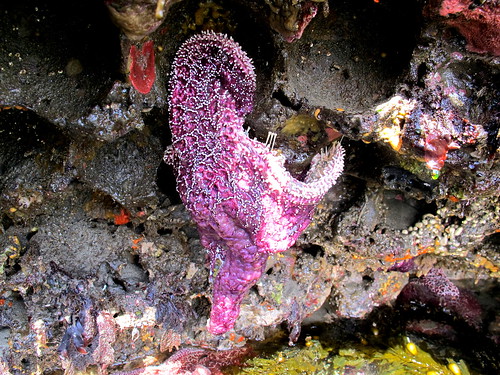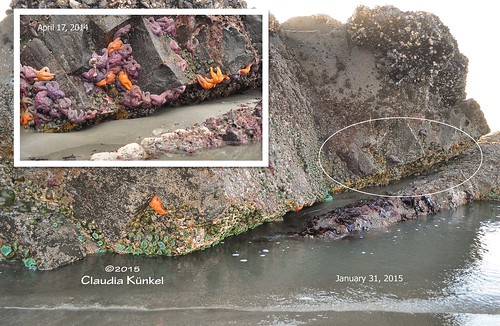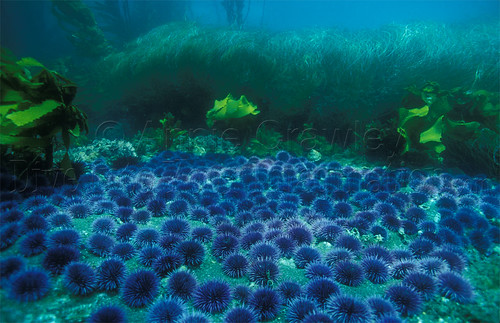 |
| image by Jonathan Martin |
So, my apologies for the delay between my last post and this one. Between traveling from the west coast, the blizzard and my laptop experiencing..."difficulty" I've missed one or two posts... But! here's what I have been up to...
So about two weeks ago I was in Seattle at the Sea Star Wasting Summit, hosted by the Seattle Aquarium!
This was an informal gathering of about 35-40 people who work on the west coast of North America, ranging from Alaska to Southern California to report on various aspects of Sea Star Wasting Disease (aka Starfish Wasting Disease aka Starfish/Seastar Wasting Syndrome).
The meeting brought together folks from a broad range of occupations that all have had some experience or contribution to our knowledge of the Starfish Wasting Disease phenomena: pathologists, veterinarians, ecologists, citizen scientists, aquarists, taxonomists, educators, and etc..
So, while I can't repeat everything that was discussed (some of it was still unpublished) here are some further insights...
What do we know?
1. Who? The disease seems to affect sea stars in the family Asteriidae most acutely. This includes
Pycnopodia helianthoides (aka sunflower star),
Pisaster spp (esp.
P. ochraceus-the Ochre star),
Evasterias troscheli (mottled stars) and
Orthasterias koehleri (rainbow stars).
Pycnopodia helianthoides, the sunflower star seems to have been one of the hardest hit...
 |
| Image by Jonathan Martin |
but ultimately the disease seems to affect nearly every shallow-water seastar species on the Pacific west coast. So that includes leather stars (
Dermasterias), Bat stars (
Patiria), sun stars (
Solaster)
and so on...
There were a few species which showed much lower incidence of being infected but its unclear if that's simply an artefact (i.e. they aren't seen that often to begin with), less vulnerable, but there is really no further data...
2. Where? The disease, as part of the larger event starting in 2008 is now known from southern Alaska, British Columbia, Washington, and Oregon down to Southern California (and apparently Baja California).
 |
| map from http://data.piscoweb.org/marine1/seastardisease.html |
At the moment, almost all of our observations are from intertidal/subtidal observations. Nothing really substantial from "deeper" water...
There is another "die off" event on the east coast but it has not been as thoroughly evaluated, so not sure.
This 2012/2013 blog by Elena Suglia documents some of this phenomena
But, one important new clue: The Gonads! One of the interesting details which Ian Hewson
reported at the SSW Symposium (link here) which was further reported in the news was this bit: the gonads in infected sea stars are often inflamed with tissues sometimes extruding from the gonopores (the openings through which the gametes are emitted). Note the white blobby bit between the arms of the purple
Evasterias troscheli (mottled star) in the picture below...
 |
| image by Allison Gong |
A further important consideration is that gonads and reproduction are tied to activity during certain times of the year as temperature fluctuates. This might also be an important consideration.
This is will likely be important in piecing together the actual cause of how the disease actually kills the sea stars, which remains poorly understood.
Challenges: figuring out what causes the disease is difficult and remains elusive.
So, by now many people have likely seen Ian Hewson et al.'s (2015) article showing identification of the Sea Star associated Densovirus (SSaDV) with the disease. Popularly reported here and in other news outlets..
This was an important first step. But its important to realize
that we still do NOT KNOW that this is the actual CAUSE of the disease.
Probably one of the most important lessons I picked up from the meeting was how careful the work of disease pathologists needs to be.
Correlation is NOT Causation!
Powerful genetic tools have allowed us to characterize the SSaDV virus and experiments show that it is ASSOCIATED with the disease. But we have yet to identify exactly HOW Starfish Wasting Disease actually works. In other words, what actually happens to the animal to initiate death?
Just because we have this "disease associate" does not actually mean that it causes the disease.. it could simply be present with the disease as part of the suite of entities (e.g., bacteria, protists, etc.) taking advantage of the sick animals. Or it could be something
already present that has become fouled or modified by some other factor.
My take away message was that MULTIPLE lines of evidence (genetics, tissue analysis, external observations, etc.) should all converge on the same conclusion. In other cases, pathologists are able to actually observe the agent (virus, bacteria, etc.) perform whatever action it takes to create the disease and thus the symptoms..
At this point, we are still working on what actually causes the "wasting symptoms" to occur. This is not to say we are clueless about it..but a definitive cause has not been shown.
One of the biggest issues we have right now?
Understanding starfish biology.
A LOT of the study of invertebrate physiology went "out of style" in the 1960s along with a bunch of natural history research. There are many instances when we just don't understand what "normal" is for sea stars (or their relatives for that matter).
And so..the other powerful tool at play? Careful critical thinking..
(and yes.. what this means in the real world is that NO zombie or science fiction disease movie is likely EVER going to be solved in two hours!!)
What Tools are being used?
So now that I just got done saying a whole bunch of stuff about care and critical thinking, that is NOT to say that scientists are not throwing a whole arsenal of scientific tools at this problem to try and obtain as many different types of data as they can!
Dr. Felicia Nutter and student Eric Littman at Cornell University for example utilized sophisticated imaging techniques ranging from traditional X-rays to CT scans in order to look at the endoskeleton in afflicted sea stars, which it was thought, might be showing decreased skeletal density.
 |
| Image from http://phys.org/news/2016-01-imaging-technology-combat-disease-endangers.html |
Other tools include the Illumina technology sequencer which was used to investigate the phylogenomics of the virus and other microbes present in diseased individuals. Long story short: Tissue are taken from infected animals, recover DNA (or RNA) is extracted and purified, these machines sequence it (i.e., analyze it), and this permits identification of the organisms present. This was how the SSaDV (the sea star virus) was identified and characterized...along with the many other bacteria and other ambient forms living in/on the sampled sea stars..
These are among the many types of tools being applied..but there are certainly many more that fall into the more traditional roles: taking tissue samples, aquaria and freezers for living animals and tissue specimens
But as mentioned above, all roads should lead to Rome.. and with any luck, the results from these studies should all be consistent with one another...
Are there/Will there be Ecological Effects??
So, although a LOT of the attention both public and scientific is on the disease itself, many folks often forget that the
after effects of the disease will also be very significant!
Sea stars such as
Pisaster ochraceus and
Pycnopodia helianthoides occupy very important roles in marine ecosystems. Called keystone species, their presence and/or absence as predators is thought to
have a HUGE effect on the organisms around them.. (I wrote up a little of this on Pisaster here)
So what happens when those predators are suddenly gone??
There were no rigorous and statistical cases showing a clear "cause-effect" loss-of-predator-leads-to-increased-prey data presented. But in many cases there were anecdotal observations that "trophic cascades" might be starting...
This one for example, allege that there has definitely been a shift in abundance of prey species..such as sea urchins as mussels.
That basically means that the
loss of a predator triggers an increase in prey (here was an earlier blog post about urchin barrens).
which then results in some other ecological effects in the ecosystem.. say, a decrease in kelp coverage (resulting from urchin overfeeding) which in turn results in the loss of kelp-inhabiting species and so forth and so on....
Some scientific observations suggest that we might be seeing some of this.. but not necessarily everywhere. Environments across the coast vary.... so what you see in some parts of California might NOT be the same situation in some protected cover in Oregon....
Time, further data and experiments will tell..
Other Miscellaneous Questions!
1. Are all the starfish on the coast extinct? Is my favorite species (e.g., Pycnopida, Pisaster, etc.) extinct??
In NO instance is ANY of the species surveyed thought to be completely extinct. Some individuals and news agencies have either misreported or exaggerated the the impact of the disease. MANY populations have been decimated.
Localized populations have been wiped out...but there STILL are healthy populations of all afflicted sea stars species.
So, some species are "locally extinct" which means that you might not see any at your favorite local rock pool or pier but there's no evidence for complete and total extinction.
2. What about the juveniles we are seeing?
There are many reports (
such as this one in Nat Geo and this
one in the OregonLive) of smaller individuals of various species,
Pisaster, Pycnopodia, etc. being seen widely along the west coast where adult starfishes have been wiped out by SSWD.
There were MANY reports of these out in the intertidal zones along the coast.
The significance of the juveniles is unclear at this point. Possible reasons and questions as to why we are seeing them:
- They are now more obvious because the adults are gone (and we are looking)
- They have become more bold because the adults are gone.
- Are there more of them present now because of absent adults?
- How fast do they grow? Will they enter in the former adults ecological setting?
Sadly, there HAVE been reports that small individuals can contract the disease. But they don't all seem to have it. So what's going on?? This whole dynamic involving juvenile species remains poorly understood.
If you see any,
you can report them to the Seastar Wasting Website here.
You can download a nifty GUIDE to identifying tiny juvenile sea stars HERE.
3. Is the worst over?
Yes. It seems to be, but mainly because most of the adults which carried the disease are themselves all gone. Its unclear what factors are at play insofar as why some populations have been more heavily hit than others.
4. Do Any of the standard aquarium antibiotics work?
Many of the standard aquarium drugs (antibiotics, etc.) seem to be most effective against the secondary bacterial infections which attack the animals after becoming sick. But unfortunately, they don't seem to curtail the actual disease much if at all.
5. Is Climate Change/Temperature a factor?
I would say yes.
And others would agree with me (here). There have been several informal experiments and observations of seasonality which suggest that higher water temperature is, at least, significant and worth investigating as a factor. But, at the time of this writing, a clear paper has not been published which establishes a rigorous link.
6. Is the wasting disease caused by Fukushima/Republicans/Democrats/Cthulhu/Extraterrestrials/ Atlantis/Inner dimensional beings from the 7th Parallel?
Nope. Not even a little.
My thanks to Lesanna Lahner, Ian Hewson, Melissa Miner and the other participants at the Sea Star Wasting Symposium!
Standard caveat: i've done my best to represent a LOT of information. Any mistakes are my own.
Further Resources:
The Sea Star Wasting Site at UCSC:
http://www.eeb.ucsc.edu/pacificrockyintertidal/data-products/sea-star-wasting/
Ian Hewson's blog about SeaStar Microbial Ecology:
https://seastarwastingdisease.wordpress.com/
iNaturalist: Tracking Sea Star Wasting Disease:
http://www.inaturalist.org/projects/pisaster-disaster-tracking-starfish-wasting-disease
A useful summary page from Sanctuary Integrated Monitoring Network (SIMoN)
http://sanctuarysimon.org/projects/project_info.php?projectID=100401


